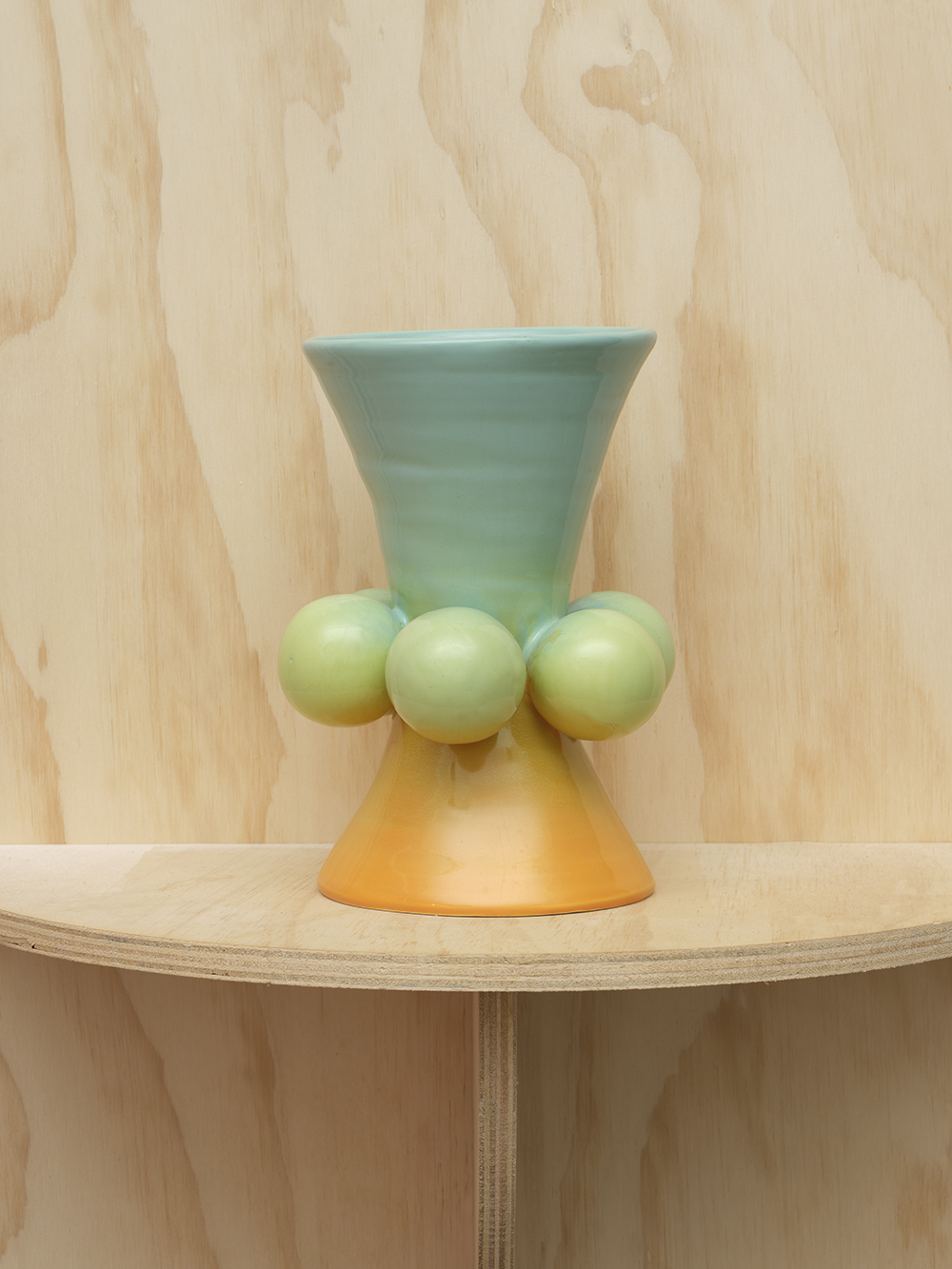Your cart is currently empty!
Marc Camille Chaimowicz Gaga & Reena Spaulings LA

An escapist, fantasizing indulgence reverberated throughout Marc Camille Chaimowicz’s solo exhibition “Emma Dreaming of California.” Just as Gustave Flaubert’s Madame Bovary—from which Chaimowicz extracted his protagonist, recontextualizing Emma Bovary within present-day California—titillates its reader with exacting details of its characters and their settings, Chaimowicz also lingers on the minutiae of personal possessions and what they might indicate. Representing Emma through sculptures that appear to be household readymades, alongside collages and installations, the artist gave the viewer a peek into the world of the fictional character as well as his own retreat into this imagined universe.
On the far wall of the exhibition, a grouping of 33 x 23-inch works on paper hung in a row. The base layer of each pastel-hued swatch is a printed variation on the delectably intricate patterns that Chaimowicz has long utilized. Adorning each of these patterned bases is a photograph enhanced with various writings and embellishments. E.B. in L.A., no. 21 (1993/2023–24) depicts Emma as a dolled-up Isabelle Huppert with the upside-down cross and butt crack of Man Ray’s Hommage à D.A.F. de Sade (1929) stuck to her face like a scarlet letter. Comedically captioning this collage are the words “EMMA FACING EXCOMMUNICATION AND APOLOGY ISABELLE HUPPERT.”

In distinct groupings throughout the gallery were collections of domestic objects that congregated around Chaimowicz’s sculptural furniture. Blurring the line between design and art throughout his career, the artist here included the functional Coffee Table Lilac (2024), Piano Stool (Burgundy) (2014) and Ashtray (2015)—all of which reference and flatten the flamboyance of Baroque detailing, commingling this sumptuous style with his own—to indicate the trappings of Emma’s indulgent new life in California. By literally placing these furnishings on a pedestal, the artist elevated a fictionalized scene of domestic discord to the level of art as if it were a still-life painting, suggesting the import of these functional objects is more about the story they tell than reflecting their use value.
Walking through “Emma Dreaming of California,” one wondered what is gained or lost in inserting the character of Emma within contemporary California. “IF ONLY EMMA HAD BEEN AWARE OF SELF EMPOWERMENT” [sic] one of Chaimowicz’s collages reads, implying that Emma’s dalliances would likely be more acceptable now. The artist’s speculation seemed keenly aware of itself in the joking captions and lavish scenes; he seems to poke fun at all this frivolity while simultaneously relishing it. The artist drew comparisons between times past and present but kept Emma squarely in the realm of entertainment—he granted her potential freedom from moral judgment by recontextualizing her character, while simultaneously undermining this generous gesture by keeping her a spectacle to be ogled by the viewer’s amusement. Chaimowicz ultimately maintained his subject’s status as the haphazardly pleasure-seeking anti-heroine who must eternally cater to pleasure-seeking spectators, though—with this exhibition’s concept coming about in the depths of the pandemic—the artist’s expression of lighthearted condemnation for neglectful leisure was likely directed at himself as much as the character.
[/et_pb_text][/et_pb_column][/et_pb_row][/et_pb_section]